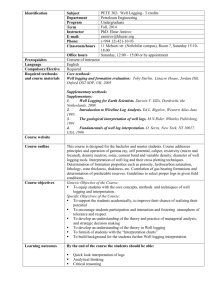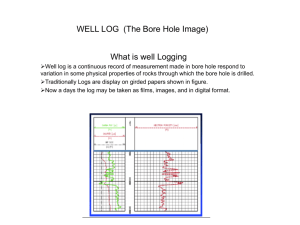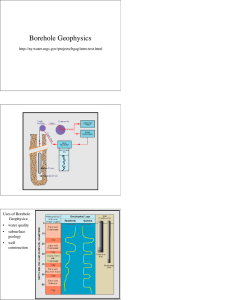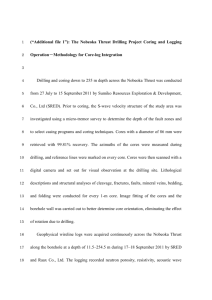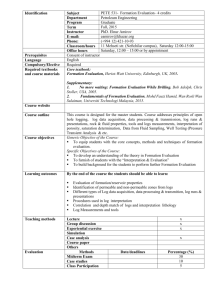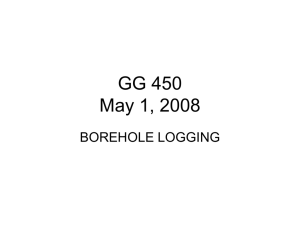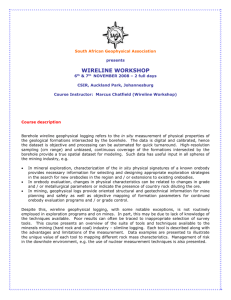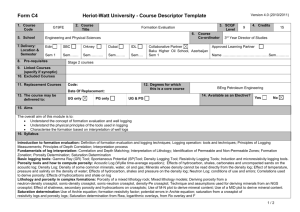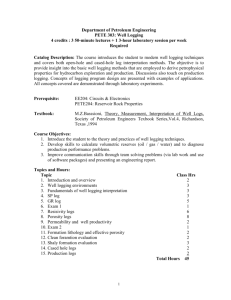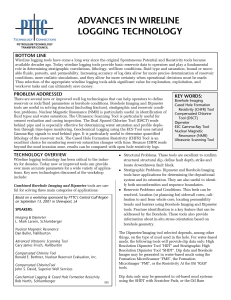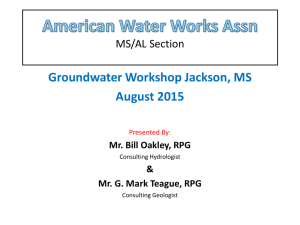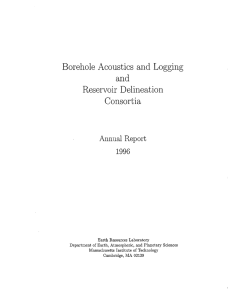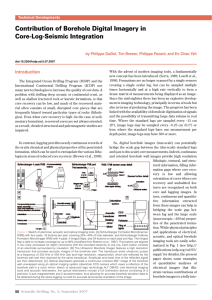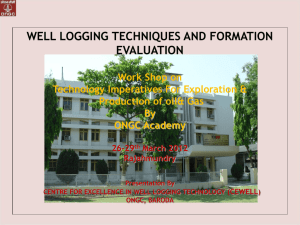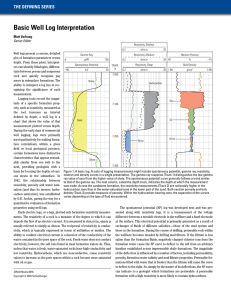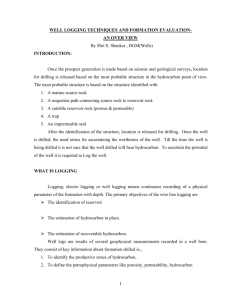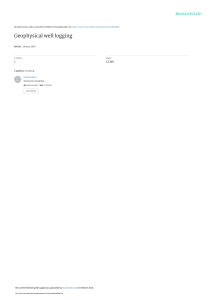Geophysical Stratigraphic Methods
advertisement
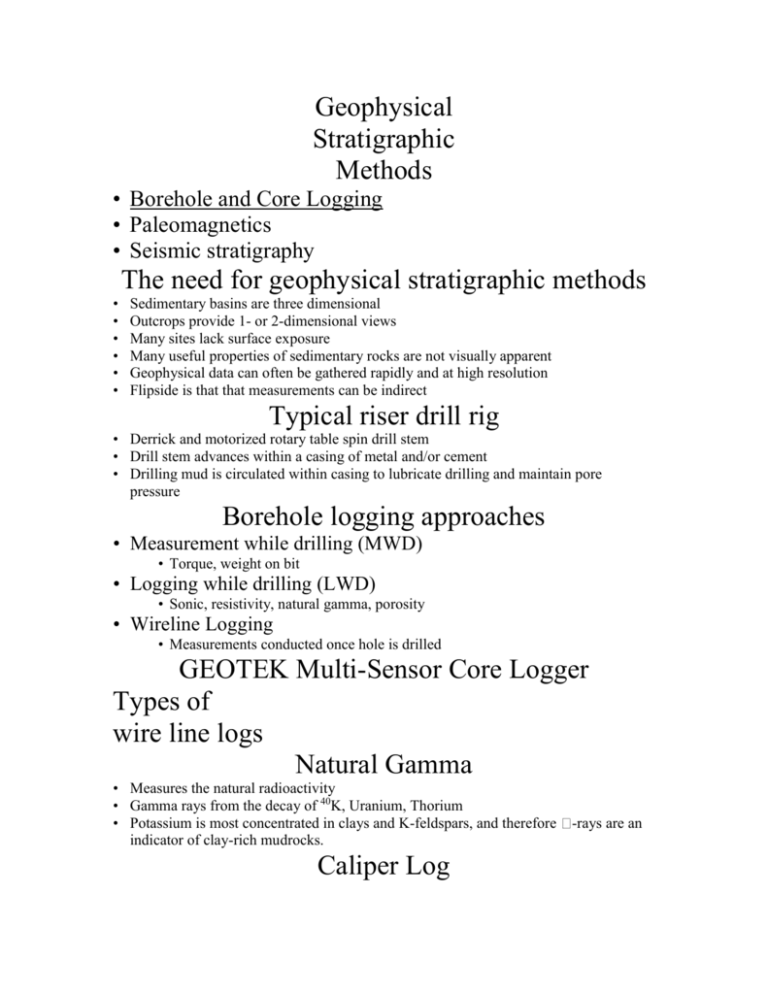
Geophysical Stratigraphic Methods • Borehole and Core Logging • Paleomagnetics • Seismic stratigraphy The need for geophysical stratigraphic methods • • • • • • Sedimentary basins are three dimensional Outcrops provide 1- or 2-dimensional views Many sites lack surface exposure Many useful properties of sedimentary rocks are not visually apparent Geophysical data can often be gathered rapidly and at high resolution Flipside is that that measurements can be indirect Typical riser drill rig • Derrick and motorized rotary table spin drill stem • Drill stem advances within a casing of metal and/or cement • Drilling mud is circulated within casing to lubricate drilling and maintain pore pressure Borehole logging approaches • Measurement while drilling (MWD) • Torque, weight on bit • Logging while drilling (LWD) • Sonic, resistivity, natural gamma, porosity • Wireline Logging • Measurements conducted once hole is drilled GEOTEK Multi-Sensor Core Logger Types of wire line logs Natural Gamma • Measures the natural radioactivity • Gamma rays from the decay of 40K, Uranium, Thorium • Potassium is most concentrated in clays and K-feldspars, and therefore indicator of clay-rich mudrocks. Caliper Log -rays are an • Arm that measures the width of the borehole • Provides information on hole integrity which is lithology dependent. • Hole width information also needed to correct data from other logs Spontaneous potential (SP) • Measures naturally occurring electric potential between a ground electrode at surface and electrodes lowered on sonde • Reflects permeability • Permeability largely depends on grain size, SP reflects trends • Coarsening upward and fining upward sequences Resistivity Directly measures the electrical conductivity and resistivity of the subsurface strata on short, intermediate and large scales Varies by pore fluids (e.g., fresh or salt water, oil, or gas) and degree of cementation Formation MicroScanner (FMS) • Closely-spaced resistivity sensors on pads • Differences on cm-scale • Unwrapped borehole picture Comparison of LWD RAB and FMS Microscanner data •LWD RAB provides continuous coverage •FMS has higher resolution Dual Laterolog • Non-Imaging resistivity tool • Arrays of resistivity sensors at different spacing provide shallow and deep penetrating response. • Useful for determining the permiability of the formation. Combined Electric logsSP and R • Logging methods are most effective when applied together Logging as a stratigraphic tool (Example using SP and R) Facies models from logging properties! Dipmeter Log • Four- or six-armed microresistivity tools for positions around the borehole • Determination of bedding dip -> subsurface structure • Determination of sedimentary structures for facies analysis. Using dip meter logs and SP to determine paleoenvironment Formation Density (Gamma Density ) • Flux of backscattered gamma rays from a gamma ray source in the tool • Scattering is dependent on the electron density • Used to determine formation porosity and bulk density (for gravity surveys) Neutron Porosity Logs • • • • Emits fast neutrons and measures their energy upon return Hydrogen in water and oil absorb energy from neutrons during collision Energy loss reflects the amount of pore-fluids per unit volume of rock Problems with H in clay and gypsum Nuclear Magnetic Resonance (NMR) • Measures the magnetic “spin” density of the atomic nucleus. • Provides information on permeability and compostion Magnetic susceptibility • Measures amount of magnetization that can be induced on the formation in the presence of an applied field • Provides information on the lithology of the formation • Needed to normalize paleomagnetic data Paleomagnetics tool • Determines downhole paleomagnetic field strength and orientation • Requires orientation of sonde in borehole • Less accurate and precise than shipboard measurements Sonic • Records the P-waves (compression) velocity of sound in the borehole • Velocity is a function of lithology and porosity or bulk density of the rock • Helpful for interpreting and “ground-truthing” seismic cross-sections especially when used in conjunction with density logs to calculate acoustic impedance
